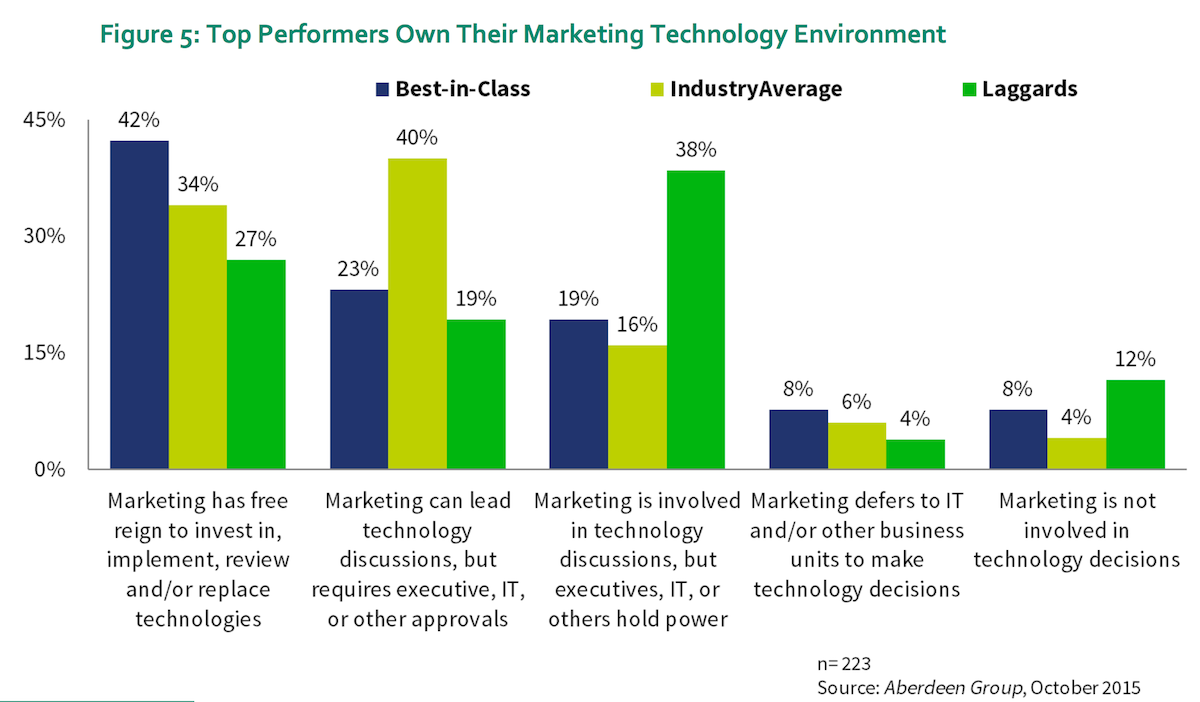Marketing enablement is a process, not a 'solution'


Alex Ortiz
VP Marketing @ Tray.io
What is marketing enablement? This question is often confused between IT and marketing organizations. Learn why it it is about process, not the tech stack.
While most managers are familiar with the concept of "marketing enablement," the phrase never quite matched the buzz-worthiness of its counterpart, "sales enablement." This has nothing to do with the implied importance of marketing versus sales enablement, and everything to do with how we talk about marketing technology.
Solving problems isn't the same as creating value
Data is the lifeblood of nearly any marketing initiative. Social media, customer outreach platforms, emails and web chats contain enough information to render near-complete portraits of customer personas. Motivations that were once impossibly opaque can now be understood and catered to.
But it would be a mistake to assume marketing tools facilitate what is described above, or that they are guaranteed to help marketers pipe warm lead after warm lead to sales. A strong marketing stack can speed up tasks, which is a victory, but that's not marketing enablement.
For example, marketing email automation will let you push email content to certain leads based on input values from a marketer, which is great. But what if you wanted those emails to be triggered automatically when a prospect likes something on Facebook that is loosely related to a recent drip campaign? Your email automation platform isn’t necessarily designed to automatically funnel leads into certain drips based on that lead’s recent activity on Facebook or Twitter. But it could be.
The point is, when marketers work within the confines of their tools, they slot themselves into user stories determined by the developers of those resources. They can solve some problems, but they are not entirely free to identify new opportunities for value that exist independently of those tools as workflows. They're effectively operating inside boxes.
Where's the lid?
In the past, according to Aberdeen Group's State of Marketing Technology Report: Controlling the Chaos, IT has been responsible for building out the integrations necessary to extend a marketer's reach. Meanwhile, the onus is on marketers to decide what tools and/or integrations they need to do their jobs well. They are expected to be aware of the types of problems they must solve to get results.
Thus, IT and marketing come to the table with incompatible understandings of what is meant by "marketing enablement." Marketing might think it means one thing because their perception of what is possible is squeezed by the confines of their technology. Meanwhile, IT thinks marketing enablement is whatever marketing says it is. As Aberdeen Group worded it, they lack the "marketer's eye."
But what good is that eye when data silos divert its gaze in multiple different directions – more specifically, eight (the minimum number of marketing initiatives that a VP might be overseeing at a given time) and 17 (the number of activities a marketing team member handles at once)? With so many disparate objectives, and so few contextual data links between them, it's often unclear why something does or does not work out a certain way, or for that matter, why one application seems so much more effective than another. This can ultimately lead to misguided technology purchases in the name of "marketing enablement."
It's no wonder so many marketing departments struggle to define measurable outcomes.
Unified marketing: More than wishful thinking
To create value is to build processes that can drive _all _of your data to action. In marketing, the same applies. Getting the timing of lead nurturing campaigns just right, isolating the ideal audience, and knowing what actions to take to drive engagement and accelerate buying behavior requires free-flowing data between applications. That's because marketing enablement, in its truest form, is the ability of marketing staff to operate within the confines of their imaginations, as opposed to the confines of existing user stories.
Case in point, Aberdeen Group's research found that best-in-class marketers are 74 percent more likely to have "a strongly integrated system of marketing technology solutions."
In other words, unified marketing is not a pipe dream, and according to the numbers, it works.
For the full transcript of Aberdeen Group's research, click here.